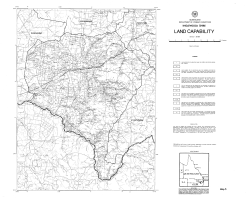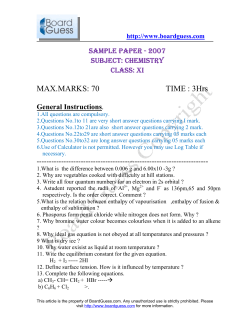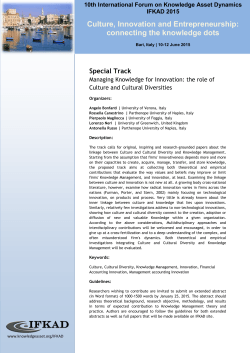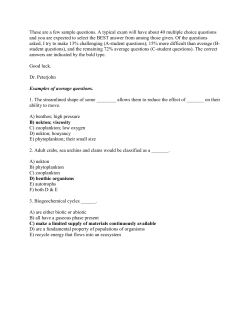
ENVIRONMENTAL ENGINEERING
ENVIRONMENTAL ENGINEERING May 22-23, 2008 The 7th International Conference Faculty of Environmental Engineering Vilnius Gediminas Technical University Saulėtekio ave 11, LT-10223 Vilnius, Lithuania Phone: +370 5 2745090; Fax.: +370 5 2744731; e-mail: ap2008@ap.vgtu.lt COMPARISON OF VARIOUS AMENDMENTS ON THE GROWTH OF THE TARGETED BACTERIA ASSOCIATION AND AMMONIA BIODEGRADATION Alina Mihailova1, Olga Muter1, Silvija Strikauska2, Baiba Limane1, Andrejs Berzins1, Uldis Viesturs1,2,3, Dzidra Zarina1,3 1 University of Latvia, Institute of Microbiology and Biotechnology, Kronvalda boulvd., 4, Riga LV-1586, Latvia, 2 Latvia University of Agriculture, Liela str., 2, Jelgava LV-3001, Latvia 3 Institute of Wood Chemistry, 27 Dzerbenes str., Riga LV-1006, Latvia E-mail: alina.mihailova@inbox.lv, olga.muter@inbox.lv, Silvija.Strikauska@llu.lv, andrejs54@inbox.lv, lumbi@lanet.lv, dz2333@inbox.lv Abstract. The effect of medium composition on the growth of the PNNS (i.e. Pseudomonas spp., Nitrobacter spp., Nitrosomonas spp., Sarcina spp.) association was studied. The main objective of this study was to determine the factors, which influence the physiological state of the association and, therefore, could improve further use of this association as inoculum for ammonia biodegradation. Two different salt compositions (buffered and non-buffered), as well as organic amendments (glucose, fructose, molasses, cabbage leaf extract (CLE), yeast extract) were tested. Among amendments tested in this study, only CLE demonstrated a sufficient decrease of the total nitrogen in medium during 14-days cultivation, i.e. from 0.5 g/l to 0.1 g/l. Formation of colonies onto the glass tube surface upon the growth of the PNNS association could serve as a tool for further experiments on cell immobilization in biofilter for ammonia biodegradation. The use of the whole association was shown more effective in terms of its application for ammonia biodegradation, as compared to single bacteria species of this association. Keywords: ammonia, nitrification, biofiltration, PNNS association, amendments, cell adherence. Abbreviations: CLE – cabbage leaf extract ; CFU – colony forming units; PNNS – Pseudomonas spp., Nitrobacter spp., Nitrosomonas spp., Sarcina spp. ; SEM – scanning electron microscopy. 1. aspects of ammonia biofiltration process, which involves physical, chemical and biological interactions [5]. In the process of biological ammonia oxidation either bacteria of a single species or bacterial associations can be used. As growth rates of nitrifying bacteria are extremely low, the acclimation time to reach steady state sometimes takes 1-2 months [3]. It has been reported that in mixed cultures nitrification reactions frequently are observed to proceed more rapidly in the presence of heterotrophic microorganisms than in pure culture [6]. Organic metabolites formed by the chemosynthetic bacteria could readily account for any extensive development of heterotrophs in inorganic nitrification media. Isotopic labelling studies have proved that different Introduction At present, ammonia emission and subsequent wet and dry deposition are a significant waste management problem facing animal husbandry and agriculture. The traditional treatment of ammonia is based on physical and/ or chemical processes [1]. Biofiltration is an emerging technology [2], and in comparison with traditional methods of air pollution control, it offers a number of advantages for the treatment of low concentrations of polluted air streams [3]. Biological ammonia removal occurs by the process of its nitrification to nitrate. Nitrate can subsequently be denitrified to nitrogen. Both autotrophic and heterotrophic nitrification can take place [4]. There are many uncertain and variable 218 organic compounds are able to incorporate into cells of autotrophic bacteria. These compounds include acetate, pyruvate, [7, 8, 9, 10], a-ketoglutarate and succinate [8], amino acids [8, 11, 12], fructose [13]. Krummel and Harms reported that addition of formate, acetate, pyruvate, glucose, or peptone had a negligible effect on NO2 – formation in two Nitrosomonas strains [9]. Other research shows that addition of some amino acids to N. europaea cells was reported to increase production of NO2 – and production of protein [12]. Hommes et al. [13] reported that Nitrosomonas europea cultures containing mannose, glucose, glycerol, mannitol, citrate or acetate show little or no growth. Thus, the effect of organic amendments on growth and activity of nitrifying bacteria is discussible. In the present study, an autotrophic ammoniabiodegrading association (PNNS) previously isolated from the biological activated sludge of the fish factory wastewater treatment plant, was used [14, 15]. This study was mostly focused on the testing of various amendments in the medium during association growth with the aim to determine the factors, which influence the physiological state of the association and therefore could improve further use of this association as inoculum for ammonia biodegradation. Experiments were performed with batch cultures. 2. were measured by electrode (Hanna pH213). All chemicals used in these experiments were analytical grade. For scanning electron microscopy the samples were fixed in glutaraldehyde solution and dried at 30°C for about 2 h. Dried samples were coated with gold in an Eiko Engineering Ion Coater IB-3 and observed in a JEOL scanning microscope JSM T-200 at an acceleration voltage 30 kV. 3. Materials and methods Two mineral medium were used for cultivation. Medium A, g/l: (NH4)2SO4 – 2.5; K2HPO4 – 1.0; NaCl – 2.0; MgSO4 x 7 H2O – 0.5; FeSO4 x 7 H2O – 0.001; CaCO3 – 10 g [modified from 14]. Medium B, g/l: (NH4)2SO4 – 2.5; Na2HPO4 x 12 H2O – 38.0; KH2PO4 – 0.7; NaHCO3 – 0.5; MgSO4 x 7 H2O – 0.1; FeSO4 – 0.0081; CaCl2 – 0.0139 g [modified from 16]. Amendments were used as follows: cabbage leaf extract (CLE) (samples A1 and B2), molasses (A3 and B4), yeast extract (A5 and B6), glucose (A7 and B8), fructose (A9 and B10), as well as a mixture of all mentioned amendments in proportionally, i.e. 5-fold, reduced concentrations (A11 and B12). The samples A13 and B14 did not contain any amendment. Glucose and fructose were added to medium in concentration 2.5 g/l. Other amendments were used in concentrations to achieve approximately the same level of reducing sugars in medium. CLE was prepared as described in [15]. Cultivation of the PNNS association in the liquid A and B medium was performed in 15ml glass tubes containing 10 ml liquid medium at +30 °C with agitation at 180 rpm in the dark during 14 days. Concentration of inoculum in the samples at the beginning of experiment was 2.0 x 106 CFU/ml. Total nitrogen was determined according to ISO 5983-2:2005. Concentration of NH3 and NO2- were determined colorimetrically with Nessler and Griss reagents, correspondingly. pH and RedOx potential 219 Results and discussion Growth of PNNS association in medium with different amendments. Two different salt compositions used in this experiment, i.e. A and B medium, showed a similar effect for bacteria growth, however in medium B the growth was slightly higher. Development of the PNNS association during 14-days cultivation was monitored via OD540 measurement, nevertheless the results on culture turbidity is not used in this paper because of heterogeneity of growing culture. For this reason it is quite difficult to distinguish the phases of culture growth. Turbidity in the samples was enhanced already in 2 days after beginning of the experiment. In turn, the maximum turbidity was detected to 7-10 days of cultivation. Afterwards, samples get less turbid due to formation of flakes and slimy fraction. In the samples A13 and B14, i.e. with medium A and B, but without any amendments, bacteria growth was not detected during 14-days cultivation. Besides, formation of colonies on the surface of glass tubes was detected. These colonies became visible already after 48h of incubation as the small points with further growth in size (Fig.1). The colonies were distributed on the bottom of tubes, in the middle part, as well on the upper side of the cultivation medium. Size of the colonies ranged from 3-4 mm in diameter to smaller (most probably, there were also invisible micro-colonies on the surface, thus, the smaller diameter of the colonies is not indicated here). Colonies differed by their morphology. One kind of colonies is presented on the Figure 2. 1 cm Fig 1. Formation of the colonies on the glass tube surface after 14-days cultivation of the PNNS association in liquid B medium amended with molasses (sample B4). 2,5 N-NH4+ N, g/l 2 1,5 1 0,5 I 0 1 2 3 4 5 6 7 8 9 10 11 12 13 14 Samples with different media content Control (without inoculum) PNNS association 2,5 2 N, g/l I. The center of the colony. 1,5 1 0,5 0 1 II 2 3 4 5 6 7 8 9 10 11 12 13 14 Samples with different content Fig 3. Nitrogen content in liquid medium with different amendments I - Relationship between total nitrogen and NNH4+ in liquid medium before inoculation of the PNNS association. II - Changes of the concentration of the total nitrogen in liquid medium after 14-days cultivation of the PNNS association. Description of the samples see in Materials and methods. 3, 10, 12 samples – total nitrogen in medium after cultivation – not determined. Changes in the content of the total nitrogen were detected after 14-days cultivation. Thus, the total nitrogen concentration was significantly decreased in the samples 1 and 2, i.e. amended with CLE (Fig.3II). This fact requires more detailed study in order to distinguish the processes of nitrification, denitrification and incorporation of nitrogencontaining compounds into cell biomass. The ability to carry out both heterotrophic nitrification and denitrification is characteristic to some heterotrophic species as Alcaligenes [17, 18, 19], Pseudomonas [20, 21, 22]. The PNNS association contains Pseudomonas spp., which theoretically can provide, under certain conditions, nitrification and denitrification processes. This study is supposed to be continued in future. Changes of pH and Eh during growth of the PNNS association. The pH level of culture media, as well as its redox potential plays a crucial role in bacteria metabolism, and particularly, in nitrification and denitrification processes. II. The periphery of the colony. Fig 2. SEM micrograph of the colony grown on the glass tube surface after 14-days cultivation of the PNNS association in liquid B medium amended with molasses (sample B4). Colonies consisted mostly of the rounded and slightly elongated cells with the cell length 0.7 – 1.3 µm (Fig.2-I, 2-II). The most active formation of the colonies adhered on the glass surface, was detected in the samples amended with glucose and molasses. It is important to note, that cultivation of single strains of the PNNS association under the same conditions did not result in colonies formation on the tube surface. Changes of the concentration of total nitrogen during growth of the PNNS association. Addition of different amendments to the basal salt medium can noticeably change the nitrogen content and, therefore, influence the development of bacteria association and ammonium biodegradation. As shown in Figure 3A, initial concentration of ammonium in all samples was similar and varied in the range of 0.32 0.57 g N/l. In turn, amount of the total nitrogen in medium significantly varied in dependence on amendment added to medium. Thus, addition of yeast extract resulted in an increase of the total nitrogen in medium from 0.45 g/l to 1.95 g/l (average data) (Fig.3-I). 220 At the beginning of cultivation the pH level in all samples was ranged from 7.3 to 8.0. Exception was the samples, containing medium A and yeast extract, i.e. samples 5 and 11, where the pH level was 5.5 and 6.7, correspondingly. As shown in Figure 4-I, the pH level of culture medium was changed after 14-days cultivation. Mostly it attributes to the medium A, which is, due to its salt composition, not buffered. As it is known, equilibrium between gaseous and hydroxyl forms of N-NH4+ is dependent on the pH level. At pH below 7.5-8.0 volatilization of ammonia is insignificant. At pH of 9.3 the ratio between ammonia and ammonium ions is 1:1 and the losses via volatilization are significant [23, 24]. Redox potential in tested samples at the beginning of cultivation varied in the range of -12 -60 mV, except the samples with medium A amended with yeast extract, where the Eh level achieved +78 and +13 mV, correspondingly. After 14-days cultivation, redox potential in the samples was ranged in diapasone from -67 mV to +10 mV (Fig.4-II). Kemp et al. [25] reported that nitrification rate was zero at redox levels of –200 mV and significant rates were observed in sediments when redox values were between –100 and 0.00 mV [26]. Wießner et al. reported that the ammonia removal processes were found to be firmly established, including for moderately reduced redox conditions with high efficiencies for Eh>−50 mV [27]. -40 Description of the samples see in Materials and methods. Nitrite formation during growth of the PNNS association. Nitrite formation in medium during cultivation was monitored qualitatively. Among all tested variants, the presence of nitrites during all the period of cultivation was detected in the samples 3, 6, and 11, i.e. with molasses, yeast extract and a mixture of all tested amendments added to cultivation medium. Various amendments in cultivation medium could change the equilibrium between single strains of the bacteria association in different manner. For example, Clark and Schmidt [28] reported that contamination of a culture of Nitrosomonas europea resulted in enhanced nitrite formation as compared with pure cultures. Growth of N. europaea was stimulated in mixed cultures with the heterotrophic isolate to varying degrees, apparently depending on the age and density of autotrophic inocula. Mixed culture stimulation of N. europaea was evidenced only by a shortened lag phase, since post-lag phase growth of the autotroph was equivalent in both pure and mixed cultures. The heterotrophic component had a nutritional requirement for amino acids when grown on simple media; presumably, in the mixed culture system, the heterotroph was provided with amino acids synthesized by the autotroph [28]. Additional experiments with single strains of the PNNS association demonstrated completely different dynamics of nitrogen formation upon cultivation (results not shown). It demonstrates a complexity of the processes occurred in the cultivation medium inoculated with different bacteria strains and amended by different organic components. Besides, studies on nitrogen conversion under low-oxygen and anaerobic conditions have shown that ammonia can be converted to dinitrogen by processes other than conventional nitrification of ammonia to nitrate followed by denitrification of nitrate to dinitrogen gas [29]. Under low-oxygen conditions, the production of nitrite from ammonia is favoured over the production of nitrate [30]. The nitrite can then be denitrified to nitrous oxide and/or dinitrogen without being converted to nitrate. This process has been termed “partial nitrification–denitrification”. Thus, as shown in literature, nitrites are intermediates in the complex processes of ammonification, nitrification and denitrification. Therefore, the presence or absence of the nitrites is in itself not enough to explain the processes occurred in cultivation medium. -60 4. Control (without inoculum) PNNS association I 8,5 pH 8 7,5 7 6,5 6 0 1 2 3 4 5 6 7 8 9 1011 1213 14 Samples with different media content II20 0 Eh -20 0 1 2 3 4 5 6 7 8 9 10 1112 1314 Conclusions -80 Addition of all tested compounds resulted in noticeable stimulation of the growth of the PNNS association. The association inoculated into medium without amendments – did not develop during 14days cultivation. Most probably, addition of organic -100 Fig 4. Changes of pH (I) and RedOx potential (II) in culture medium after 14-days cultivation of the PNNS association. 221 compounds provided an active growth of heterotroph (e.g. Pseudomonas spp.). At the same time, there have been many reports about a stimulating effect of different organic additives on nitrification rate and growth of autotrophic bacteria [6-13]. Formation of colonies onto the glass tube surface upon the growth of the PNNS association could serve as a tool for further experiments on cell immobilization onto the carrier in biofilter for ammonia biodegradation. Among amendments tested in this study, only CLE demonstrated a sufficient decrease of the total nitrogen in medium during 14-days cultivation, i.e. from 0.5 g/l to 0.1 g/l. This effect should be studied detailed in future. Yeast extract itself (in concentration of about 2%) significantly influenced the main parameters of the cultivation medium, i.e. increased pH, as well as decreased Eh. Addition of yeast extract resulted in 4fold increase of the total nitrogen in medium. Obviously, for future experiments, yeast extract should be used in lower concentrations. Summarizing, the results obtained in this study provide the information, which is necessary for further development of biofiltration system for ammonia biodegradation. Optimization of nitrification and denitrification processes with the use of bacteria association could sufficiently improve the biofilter construction. In particular, the process of simultaneous nitrification-denitrification (SND) i.e. without alternating anoxic and oxic phases in time or space has recently elicited significant interest. The ability to carry out both heterotrophic nitrification and denitrification was shown for Pseudomonas spp. [2022], and, therefore could be promising for further optimisation of ammonia biodegradation. The role of other species of the PNNS association in the presence of organic compounds is still not clear. However, the results obtained in this study, indicate to the important role of the PNNS association as a whole. For instance, colony formation on a surface was detected only in the samples with the whole association. Nitrite formation was detected in the samples with the whole association and with Nitrobacter spp. and Nitrosomonas spp. Cultivation of Pseudomonas spp. and Sarcina spp. alone did not provide the effect mentioned above (results not shown). These facts indicate to the important role of the whole association. There are many uncertain and variable aspects of ammonia biofiltration process, which involves physical, chemical and biological interactions [31,32]. Knowledge of microorganisms’ ecosystem, their transformations and interrelations could significantly improve the ammonia biodegradation. Acknowledgement This work was supported by the Latvian Council of Science, i.e. grants 05.1484, 04.1100, 04.1076. Aloizijs Patmalnieks and Lidija Saulite are gratefully acknowledged for SEM. 222 References 1. Davis W.T., editor. Air pollution engineering manual. 2nd Edition. New York: John Wiley & Sons, 2000. 886 p. 2. Sheridan B., Curran T., Dodd U., Couigan J. Biofiltration of odor and ammonia from a pig unit - a pilot-scale study. Biosystems Engineering, 2002, Vol. 82, No 4, p. 441-453. 3. Kim N.-J., Sugano Y., Hirai M., Shoda M. Removal characteristics of high load ammonia gas by a biofilter seeded with a marine bacterium, Vibrio alginolyticus. Journal of Bioscience and Bioengineering, 2000, Vol. 90, No 4, p. 410-415. 4. Focht D.D., Verstraete. Biochemical ecology of nitrification and denitrification. Advanced Microbial Ecology, 1977, Vol. 1, p. 135-214. 5. Devinny J.S., Deshusses M.A., Webster T.S. Biofiltration for Air Pollution Control. USA: Lewis. Publishers, Boca Raton, 1999. 300 p. 6. Gundersen K. Observations on mixed cultures of Nitrosomonas and heterotrophic soil bacteria. Plant Soil, 1955, Vol. 7, p. 26 -34. 7. Smith A.J., Hoare D.S. Specialist phototrophs, lithotrophs, and methylotrophs: a unity among a diversity of prokaryotes? Bacteriology Reviews, 1977, Vol. 41, p. 419–448. 8. Wallace W., Knowles S.E., Nicholas D.J.D. Intermediary metabolism of carbon compounds by nitrifying bacteria. Archives of Microbiology, 1970, Vol. 70, p. 26–42. 9. Krummel A., Harms H. Effect of organic matter on growth and cell yield of ammonia-oxidizing bacteria. Archives of Microbiology, 1982, Vol. 133, p. 50–54. 10.Martiny H., Koops H.-P. Incorporation of organic compounds into cell protein by lithotrophic, ammoniaoxidizing bacteria. Antonie Leuwenhoek, 1982, Vol. 48, p. 327–336. 11.Clark C., Schmidt E.L. Growth response of Nitrosomonas europaea to amino acids. Journal of Bacteriology, 1967, Vol. 93, p. 1302–1308. 12.Clark C., Schmidt E.L. Uptake and utilization of amino acids by resting cells of Nitrosomonas europaea. Journal of Bacteriology, 1967, Vol. 93, p. 1309–1315. 13.Hommes N.G., Sayavedra-Soto L.A., Arp D.J. Chemolithoorganotrophic growth of Nitrosomonas europaea on fructose. Journal of Bacteriology, 2003, Vol. 185, No 23, p. 6809-6814. 14.Strikauska S., Zarina D., Berzins A., Viesturs U. Biodegradation of ammonia by two stage biofiltration system. Environmental Engineering and Policy, 1999, Vol. 1, No 3, p. 175-179. 15.Strikauska S., Zarina D., Mutere O., Viesturs U., Berzins A. Effect of various factors to ammonia biodegradation by two stage biofiltration system. Biotechniques for Air Pollution and Control. In: Proceedings of the 2nd International Congress on Biotechniques for Air Pollution Control, A Coruna, Spain, October 3-5, 2007, p. 293-302. 16.Pan P., Umbreit W.W. Growth of Obligate Autotrophic Bacteria on Glucose in a Continuous Flow-Through Apparatus. Journal of Bacteriology, 1972, Vol. 109, No 3, p. 1149-1155. 17.Castignetti D., Gunner H.B. Sequential nitrification by an Alcaligenes sp. and Nitrobacter agilis. Canadian Journal of Microbiology, 1980, Vol. 26, p. 1114-1119. 18.Castignetti D., Hollocher T.C. Nitrogen redox metabolism of a heterotrophic nitrifying-denitrifying Alcaligenes sp. from soil. Applied and Environmental Microbiology, 1982, Vol. 44, p. 923-928. 19.Castignetti D., Petithory J.R., Hollocher T.C. Pathway of oxidation of pyruvic oxime by a heterotrophic nitrifier of the genus Alcaligenes: evidence against hydrolysis to pyruvate and hydroxylamine. Archives of Biochemistry and Biophysics, 1983, Vol. 224, p. 587-593. 20.Amarger N., Alexander M. Nitrite formation from hydroxylamine and oximes by Pseudomonas aeruginosa. Journal of Bacteriology, 1968, Vol. 95, p. 1651-1657. 21.Obaton M., Amarger N., Alexander M. Heterotrophic nitrification by Pseudomonas aeruginosa. Archives of Microbiology, 1968, Vol. 63, p. 122-132. 22.Castignetti D., Hollocher T.C. Heterotrophic nitrification among denitrifiers. Applied and Environmental Microbiology, 1983, Vol. 47, No 4, p. 620-623. 23.Reddy K.R., Patrick W.H. Nitrogen transformations and loss in flooded soils and sediments, Critical Reiews in Environmental Control, 1984, Vol. 13, p. 273–309. 24.Stowell R., Ludwig R., Colt J., Tchobanoglous G. Concepts in aquatic treatment system design, Journal of Environmental Engineering Division, ASCE, 1981, Vol. 107, p. 919–940. 25.Kemp W.M., Sampou P., Caffrey J., Mayer M., Henriksen K., Boynton W.R. Ammonium recycling versus denitrification in Chesapeake Bay sediments. Limnology and Oceanography, 1990, Vol. 35, p. 1545– 1563. 26.Kim D.-H., Matsuda O., Yamamoto T. Nitrification, Denitrification and Nitrate Reduction Rates in the Sediment of Hiroshima Bay, Japan. Journal of Oceanography, 1997, Vol. 53, p. 317-324. 27.Wießner A., Kappelmeyer U., Kuschk P., Kästner M. Influence of the redox condition dynamics on the removal efficiency of a laboratory-scale constructed wetland. Water Research, 2005, Vol. 39, No 1, p. 248256. 28.Clark C., Schmidt E.L. Effect of mixed culture on Nitrosomonas europaea simulated by uptake and utilization of pyruvate. Journal of Bacteriology, 1965, Vol. 91, No 1, p. 367-373. 29.Hunt P.G., Poach M.E., Liehr S.K. Nitrogen cycling in wetland systems. In: E.J. Dunne, K.R. Reddy and O.T. Carton, Editors, Nutrient management in agricultural watersheds: a wetland solution. Netherlands : Wageningen Academic Publishers, 2005, p. 93–104. 30.Bernet N., Dangcong P., Delgenes J.-P., Moletta R. Nitrification at low oxygen concentration in biofilm reactor, Journal of Environmental Energy , 2001, Vol. 127, p. 266–271. 31.Viesturs U.E., Tzonkov S.M., editors. Bioprocess Engineering. Sofia: Avangard Prima, 2006. 253 p. 32.Gallert C., Winter J. Bacterial Metabolism in Wastewater Treatment Systems. In: Jordening H.-J., Winter J., editors. Environmental Biotechnology. WileyVCH Verlag BmbH & Co, KGaA, Weinheim, 2005, 149. 223
© Copyright 2025









